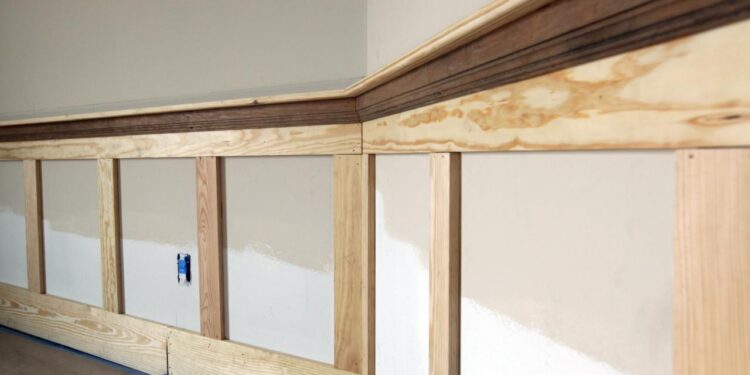Paneling made out of timber and other materials is extremely versatile and easy to install. The tongue-and-groove method keeps it simple, and these panels can be painted, stained and more. The natural wood finish of these panels is ideal, too. Enhance the aesthetics of your home with decorative timber panels.
Paneling provides as much coverage as you prefer. There are different design options available to you. If you decide to install the paneling yourself, one cost-saving strategy to employ if possible deals with the old skirting boards. They can often be left in place, saving you both time and money.
Fixing Battens
Horizontal battens are used for these types of wall panels. These have to be fitted first, and three battens are required. There is one for use at floor level, one for the top of the panels, and the third falls in between the two panels. These battens need to be spaced about 500 mm apart from each other.
Filling In Gaps
Uneven walls pose challenges, but you can get the job done. Fill in those gaps so that everything is seamless. The gaps behind battens must be addressed before you move on to the next step when installing decorative timber panels.
Step One
Battens must be cut to fit the proper length in reference to your wall. Once you cut one panel to length, you can use it to mark the height on the other panels. This makes the rest of the cutting much easier. If skirting is present, you will have to adjust the lower batten. You want it about 50 mm above the floor in this case, allowing the air to circulate since you left a small gap.
Step Two
The next step is to mark those horizontal lines you need on the wall, and you are going to use a spirit level to accomplish this task. Take your time so that you get it right. If you are patient, the process is simple and straightforward. Those battens have to be in the right place.
Step Three

Remember the battens need to be drilled 50 mm from both the top and bottom of the wall, and there needs to be about 400 to 500 mm of space in between each of them. Holding each batten in position, mark the drill spots using a bradawl. Make sure you check for any hidden pipes or any cables that will get in your way. Screw those battens in place, and you are good.





